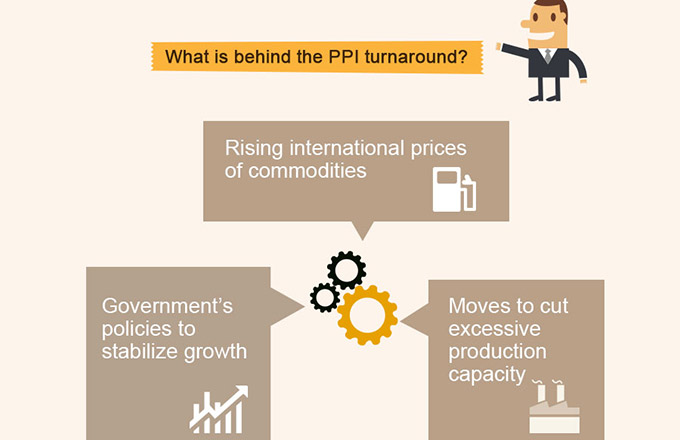Stability needed next year for stronger global economy
BEIJING - For China and the world to witness stronger economic growth next year, one thing is needed: stability.
For an international market trapped in fluctuations during a year of surprising events, a new direction in 2017 is a must, something discussed at a recently ended annual economic policy meeting in Beijing.
"Seeking progress while maintaining stability" was the main theme of this year's Central Economic Work Conference, according to a statement released by the conference on Friday. Economic priorities for 2017 were also be hammered out.
With a gross domestic product (GDP) accounting for over 15 percent of the global total, China's growth at 6.7 percent in the third quarter, or between 6.5 percent and 7 percent annually, represents a natural and significant contribution to global economic stability.
That is true more than ever since the International Monetary Fund in October revised down global growth to 3.1 percent for 2016 and 3.4 percent for 2017.
Moreover, the spillover of China's new economic policies will be strongly felt in the ongoing joint construction of the China-proposed Belt and Road Initiative, which will see development of countries along its route.
Stability with continued supply-side structural reform
In combination with the growth trend in the second half of 2016, the important messages Chinese policymakers convey at the key annual economic conference will highlight a clear reform course for the world's second largest economy.
Stability is a prerequisite for reforms, commented Margit Molnar, head of the China Desk of the Economics Department of the Organization for Economic Cooperation and Development.
Having dealt with such flashpoints like the asset bubble and local government debt, China will help prevent systematic risks, creating conditions for continuing the supply-side structural reform, he told Xinhua.
The economic work conference has maintained supply-side structural reform as necessary for stable growth, with a continued focus on upgrading the country's economic structure.
Reforms which focus on expanding effective supply in a dynamic supply-demand equilibrium, will promote stability, said Zhao Yao, professor with the business school of Rutgers University in the United States.
Long-term moves to cool down real estate
Homes are for living in rather than speculation, the conference stressed, proposing to use financial, land, taxation, investment and other instruments to establish a fundamental and long-term system to curb real estate bubbles and market volatilities.
Guo Shengxiang, dean of the Australian think tank Academy of APEC Creative Finance, described the idea as "forward-looking".
"It will be a good news, to stabilize the market, improve people's well-being and facilitate the development of the real economy," he said.
The Hong Kong and Shanghai Banking Corp (HKSB) believes measures to cool down real estate will not thwart China's economic recovery.
Without a complete tightening of monetary policy, the impact of government regulations could be neutralized by infrastructure investment with financail support, it said.
Prudent and neutral monetary policy against risks
The conference defines China's monetary policies for 2017 as "prudent and neutral", promising better adjustments to ensure stable liquidity.
Monetary policymaking should adapt to changes in the use of money supply tools, and further efforts are needed for smoother policy transmission, it said.
China will keep the yuan basically stable, while improving the flexibility of exchange rates.
"The stance shows the government is trying to find a subtle balance between stabilizing growth and controlling asset bubbles," noted Hong Hao, chief China strategist at BOCOM International.
Earlier, a Standard Chartered Bank report predicted financial and monetary policy instruments available to the Chinese government would suffice to support China's growth in the coming years.























